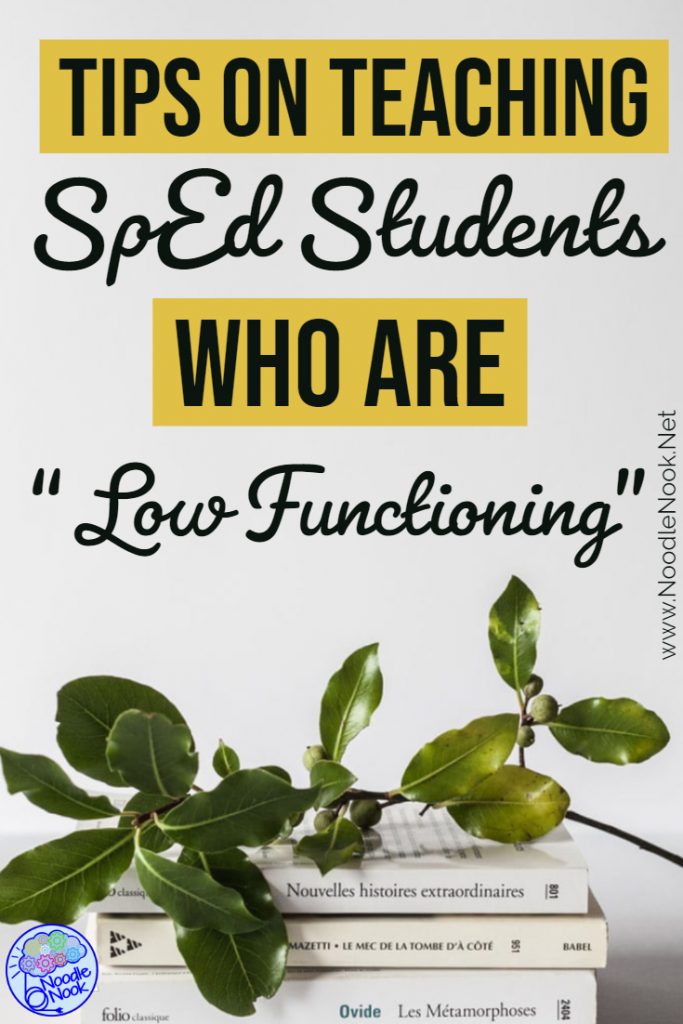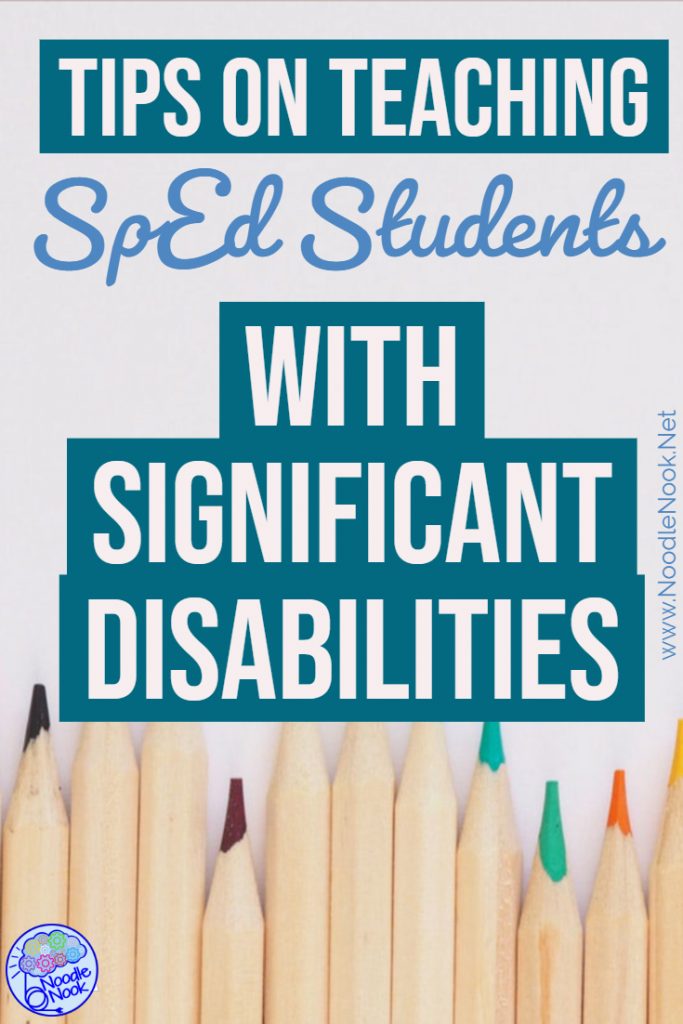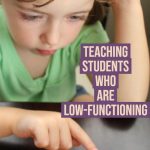
Teaching Students Who Are Low-Functioning: Who are they, what to teach them, and how to get them included in academics?
I was in a training recently and a teacher very directly told me her students were too low to have a book read to them. I gasped a little (then wept inside). It hurt me to think teachers are in classrooms all over the world with students they have academically written off. Then I stopped and asked myself how many other teachers are out there and stuck when it comes to teaching students who are “low-functioning” but want some ideas. With that in mind, I posted this video on YouTube and penned this post.
Who are Low-Functioning Students?
Let’s make sure we are using the same language for the same purpose. Who are these low-functioning students anyway? First off, I have to say I don’t even like the term “low-functioning”. It implies a minimal intellectual capacity and caps expectations.
A quick Google search pulls up folks like Wikipedia who point out a person is considered low-functioning when they are diagnosed with Autism as well as a low IQ (below 70). Indiana University wants us all to remember that every student can learn, but people with low-functioning autism are more challenging in the classroom. These students, however, should not be written off.
I’d like to take a moment to revisit the idea of Presumed Competence and Least Dangerous Assumption. It is also important to consider how students with severe autism could be more challenged on normative IQ tests. Maybe they don’t have a low IQ, but test poorly on IQ tests.
No matter the niceness of the term, the fact remains that you may have students in your classroom that are significantly challenged with academics. You’re here to figure out what you can do when it comes to teaching students who are low-functioning.

What Do You Teach Students Who Are Low-Functioning?
A student who is low-functioning may or may not be learning in every academic situation. We cannot, however, presume they are NOT learning. We have to assume things are getting in, we just have an unreliable way to measure how much gets through and what is retained.
So… what do you teach?
Everything. You should try everything.
Every student deserves to be exposed to academics at school. They are entitled to a quality education. It falls to us to determine what skills to focus on and how to gauge learning.
When it comes time to teach academics, read the story or passage or math problem just as you would to your other students or a child’s non-disabled peers. Then try a couple of things to make that feel meaningful. Remember, it may feel as though you are helping a student to participate, which is okay. They should be included even if you cannot measure their retention or learning.
How Do You Get Low-Functioning Students Included in Academics?
So, what exactly are you doing to include those lower-functioning students? You can try these three basic tricks to make the time you spend reading feel more meaningful as you work towards including them more in academic lessons.
- Cut out vocabulary boards, number icons, or visual images and offer a student a choice between two. Work on response mode as the underlying goal.
- If a student is unable to make a choice between two, offer just one option and make it an errorless choice.
- If a student is unable to move their body in a way that allows them to physically choose, still offer one or two options and help a student with hand-over-hand assistance. Be sure to offer wait time so a student can process information and still get a choice.
- Offer the correct answer icon and work with a student to do a simple put in to practice motor skills.
If you can do these in order as you work with a student, then it offers a feeling that students are more active in their learning. It also suppresses the inclination to do everything for them or exclude them altogether.

What Are Methods for Teaching Students Who Are Low-Functioning?
You are going to work with students who are academically lower in the same manner as other students with disabilities. You will need more wait time, classroom visuals, and possibly more behavior tools. Be sure these are available in your classroom as you work towards making academics meaningful for these students.
As an extra bonus, you can read more on methods for teaching a nonverbal student with Autism, by checking out these articles here.
Final Note
No matter the student or the severity of the disability, I hope you will always remember every student in your classroom deserves the opportunity to learn. They can learn, we, as educators, just need to figure out how to adjust the delivery and how to adjust the way a student demonstrates their learning. But please, please don’t eliminate the opportunity to learn.
If you like the adapted novel used in the video, you can check that out here: Alice in Wonderland- An Adapted Novel.
HEY! Get social with us! Follow us on Pinterest, Instagram, Facebook, Twitter, YouTube or iTunes!




